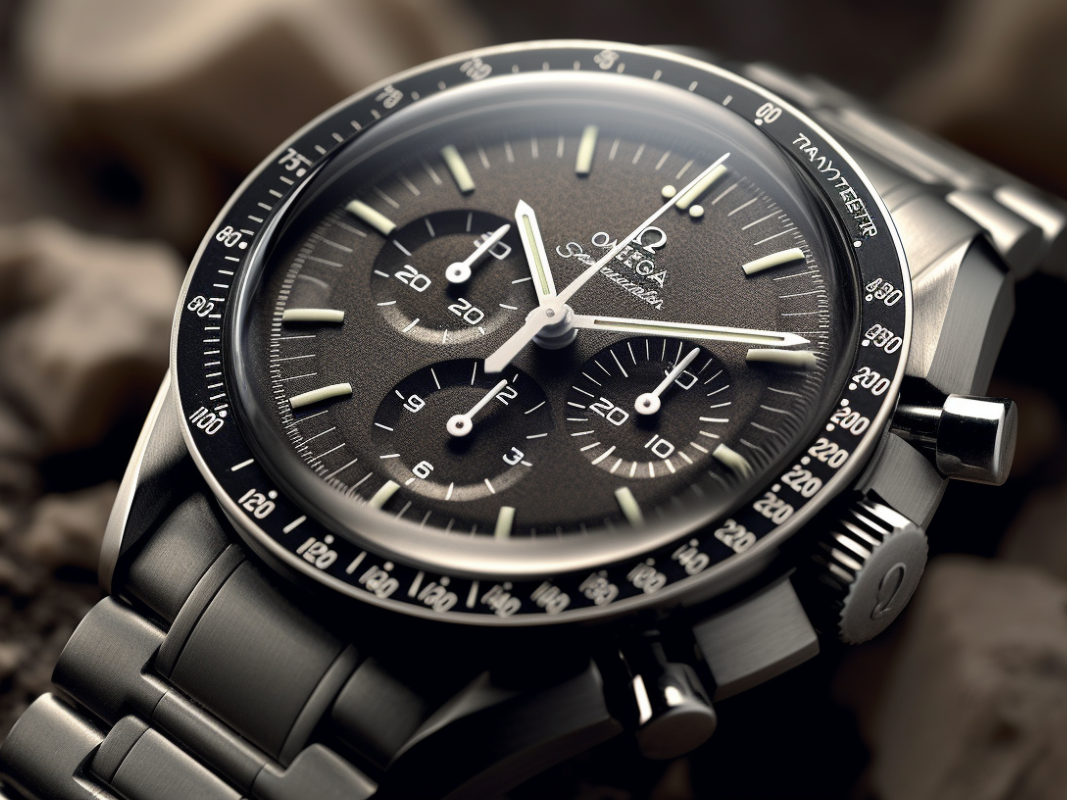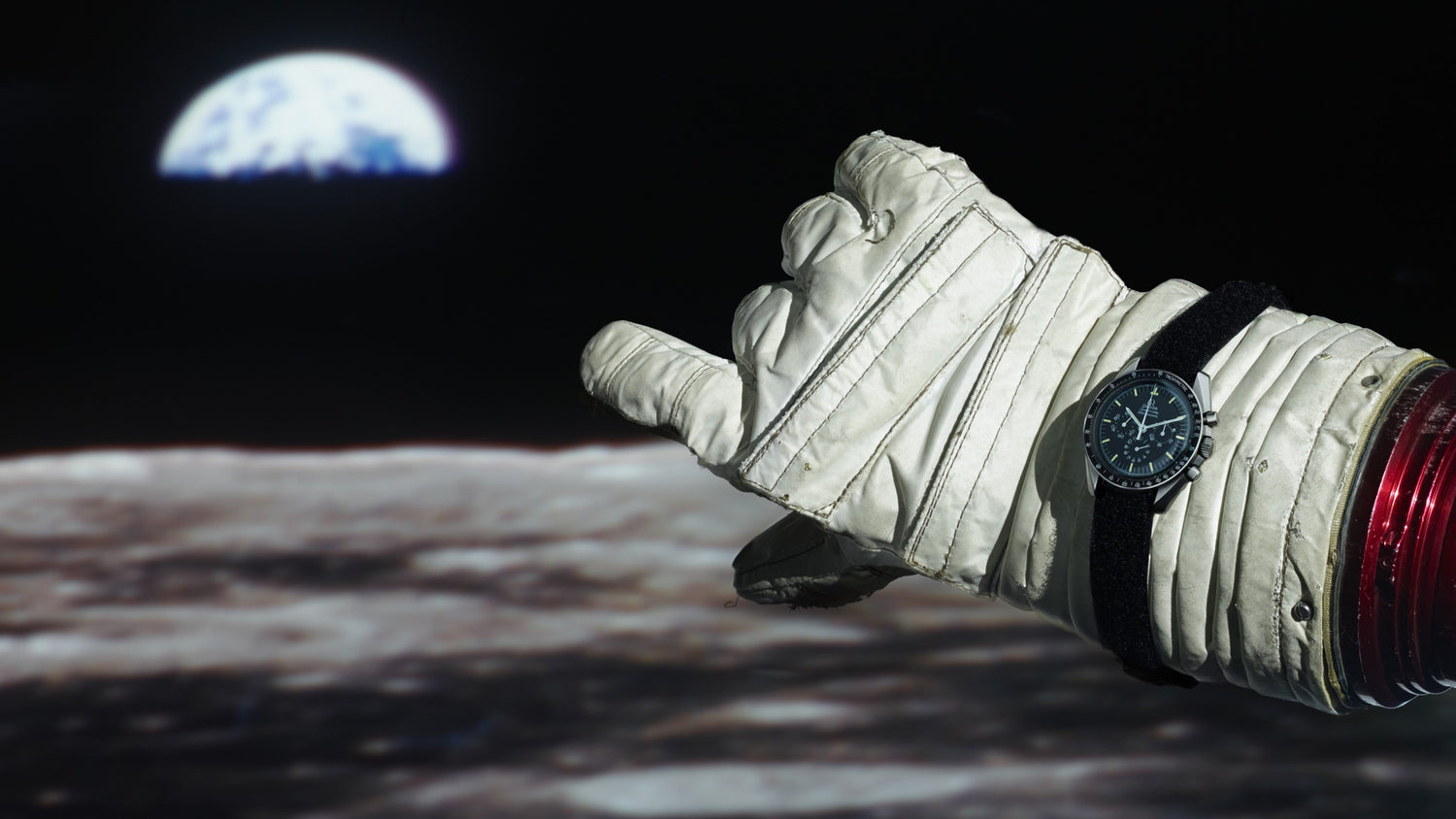
Omega Speedmaster Professional: A Journey to the Moon and Beyond
In the realm of horology, few watches hold the same iconic status as the Omega Speedmaster Professional. Its journey from the Earth to the Moon, worn by astronauts during the Apollo missions, has not only etched it into the annals of history but has also elevated it to legendary status in the world of watches. In this exploration, we delve into the rich history, technical marvels, and enduring desirability of the Omega Speedmaster Professional—a timepiece that transcends its functional role to become a symbol of human achievement.
Desirability: A Lunar Legacy
The desirability of the Omega Speedmaster Professional is intrinsically tied to its association with one of humanity's greatest feats—landing on the Moon. Worn by astronauts during NASA's Apollo missions, the Speedmaster cemented its place as the first watch on the lunar surface. The allure of owning a timepiece with a direct link to such historic moments is irresistible to collectors and enthusiasts alike.
The Omega Speedmaster's desirability extends beyond its connection to space exploration. Its timeless design, legible dial, and robust build have made it a sought-after watch for those who appreciate both its historical significance and its functionality. The iconic tri-compax subdials, black tachymeter bezel, and hesalite crystal contribute to its distinctive and enduring appeal.
History: A Watch's Odyssey Beyond the Stratosphere
The history of the Omega Speedmaster Professional is intertwined with the ambitious objectives of the Apollo program. In 1965, NASA officially designated the Speedmaster Professional as the "flight-qualified watch for manned space missions," after rigorous testing and evaluations. The following year, the Speedmaster accompanied astronaut Walter Schirra during the Sigma 7 mission, becoming the first Omega watch in space.
However, it was during the historic Apollo 11 mission in 1969 that the Speedmaster achieved its crowning glory. Worn by astronauts Neil Armstrong and Buzz Aldrin, the Speedmaster became the first watch on the Moon. Armstrong famously wore his Speedmaster outside his spacesuit during the moonwalk, securing its status as an integral part of space exploration history.
Technical Details: Precision Beyond Earth's Bounds
The technical details of the Omega Speedmaster Professional reflect its suitability for the harsh conditions of space. The heart of the timepiece is the manually-wound caliber 321 movement, renowned for its reliability and precision. Subsequent iterations, including the current calibers 861 and 1861, have maintained the watch's legacy of exceptional timekeeping.
The tachymeter bezel, essential for calculating speed, and the chronograph function, crucial for timing mission-critical events, showcase the practicality of the Speedmaster in space missions. The hesalite crystal, chosen for its durability and shatter resistance, further demonstrates the watch's resilience in the unforgiving environment of space.
Wearability: A Companion for Astronauts
Wearability is a key consideration for any watch, but in the unique conditions of space, it becomes even more crucial. The Omega Speedmaster Professional, with its 42mm case diameter and comfortable fit, was selected for its suitability in the cramped confines of a spacecraft and the challenging environment of extravehicular activities.
The stainless steel case and bracelet provide durability, while the watch's design ensures easy legibility in zero gravity. The chronograph pushers and crown, designed for easy manipulation with gloved hands, underscore the thoughtful engineering that went into creating a timepiece fit for space exploration.
Demand: A Galactic Quest for Collectors
The demand for the Omega Speedmaster Professional remains consistently high, fueled by its storied history and association with space exploration. Collectors and enthusiasts worldwide seek to own a piece of the lunar legacy, and the Speedmaster continues to be a cornerstone of many watch collections.
The watch's popularity is not confined to the realms of horology; it has permeated popular culture and become an enduring symbol of human achievement. Limited editions, commemorating various space missions and milestones, further contribute to the fervor surrounding the Speedmaster, creating a dynamic market for both vintage and modern iterations.
Reliability: Trusting Time in Space
The Omega Speedmaster Professional's reliability is not just a testament to its engineering but also to the trust placed in it by NASA and the astronauts who ventured into the unknown. During the Apollo 13 mission, the Speedmaster played a crucial role in timing the critical engine burn that ensured the safe return of the spacecraft to Earth.
This incident solidified the Speedmaster's reputation as a reliable and indispensable tool for astronauts. The watch's performance under extreme conditions has contributed to its enduring legacy as a timepiece that can be trusted in the most challenging environments.
How Chosen for the Mission: The NASA Seal of Approval
The selection of the Omega Speedmaster Professional as the official watch for manned space missions was not arbitrary; it underwent rigorous testing to earn NASA's seal of approval. In 1964, NASA put various watches, including the Speedmaster, through a battery of tests to assess their suitability for space travel.
The tests included exposure to extreme temperatures, shocks, accelerations, and vacuum conditions. The Speedmaster was
the only watch to withstand all the challenges thrown at it, earning it the coveted "Flight-Qualified for All Manned Space Missions" designation from NASA. This endorsement marked a pivotal moment in the history of the Speedmaster and solidified its role in space exploration.
Neil Armstrong: The First Steps with the Speedmaster
Neil Armstrong's iconic words, "That's one small step for [a] man, one giant leap for mankind," were accompanied by the Omega Speedmaster Professional on his wrist. Armstrong's choice to wear the Speedmaster during the Apollo 11 mission solidified its status as the "Moonwatch" and forever linked its identity with the first human steps on the lunar surface.
The watch worn by Armstrong was a standard issue Speedmaster Professional, purchased by the astronaut himself. Its role in one of the most historic moments in human history adds a layer of significance to the already storied legacy of the Speedmaster.
Buzz Aldrin, the second man to set foot on the Moon, also wore the Omega Speedmaster Professional during the Apollo 11 mission. Aldrin's Speedmaster, like Armstrong's, played a vital role in timing mission-critical events, including the rendezvous and docking with the lunar module.
Aldrin's use of the Speedmaster during the historic mission underscored the watch's reliability and functionality in a space environment. The image of Aldrin on the lunar surface, with the Speedmaster visible on his wrist, became an iconic representation of humanity's conquest of space.
Such a Brilliant Watch: Still Made by Omega
One remarkable aspect of the Omega Speedmaster Professional is that, even decades after its lunar debut, it is still being produced by Omega. The enduring brilliance of the Speedmaster lies not only in its historic past but in its continued relevance as a contemporary and reliable timepiece.
The current iteration of the Speedmaster Professional, powered by the Omega Co-Axial Master Chronometer Caliber 3861, maintains the iconic design and features of its predecessors. The modern Speedmaster Professional pays homage to its lunar legacy while incorporating advancements in horological technology, ensuring that it remains a symbol of precision and style.
Investment: Timeless Value and Lunar Legacy
The Omega Speedmaster Professional's status as a sought-after collector's item extends beyond its desirability—it also presents an intriguing investment opportunity. The watch's association with historic lunar missions, coupled with its timeless design and continued production, positions it as a timepiece with appreciating potential.
Vintage Speedmaster models, especially those with a direct link to Apollo missions, have shown a consistent trend of increasing in value over the years. Collectors recognize the significance of owning a piece of space exploration history, and the Speedmaster's enduring appeal ensures its place as a valuable investment in the world of horology.
Fits Really Well and Comfortable on the Wrist
Beyond its historical significance and technical prowess, the Omega Speedmaster Professional boasts a design that fits exceptionally well and is comfortable on the wrist. The 42mm case diameter, combined with the curved lugs, ensures that the watch sits comfortably on a wide range of wrist sizes.
The watch's versatile design allows it to transition seamlessly from the spacesuit-clad wrists of astronauts to the wrists of watch enthusiasts in everyday settings. The balanced proportions, along with the iconic bracelet or alternative strap options, contribute to the Speedmaster's reputation as a watch that not only marks moments in history but also complements a variety of personal styles.
Different Strap Options: Adapting to Every Mission
The Omega Speedmaster Professional's design versatility extends to its compatibility with different strap options. While the watch often comes with the iconic stainless steel bracelet, enthusiasts have embraced the opportunity to customize their Speedmasters with various straps, including leather, rubber, and NATO options.
The NATO strap, in particular, has gained popularity for its durability and sporty aesthetic. Whether paired with the original bracelet for a classic look or a NATO strap for a more casual vibe, the Speedmaster adapts effortlessly to different missions and occasions, embodying the spirit of versatility that has defined its legacy.
Milsub Look of the 1970s: Aesthetic Echoes of the Past
While the Omega Speedmaster Professional is primarily known for its association with space exploration, its design also echoes the aesthetic of military submariner watches from the 1970s. The "Milsub" (military submariner) look is characterized by certain design elements, including sword hands, luminous markers, and a rotating bezel.
The Speedmaster, with its distinctive dial layout, black bezel with white numerals, and luminous hour markers, carries a visual similarity to the military-inspired watches of the 1970s. This aesthetic connection adds a layer of nostalgia to the Speedmaster's design, creating a watch that seamlessly combines elements of both space and military horology.
Conclusion
The Omega Speedmaster Professional is not merely a watch; it is a timepiece that has journeyed to the Moon and back, witnessed historic moments, and continued to evolve while preserving its iconic design. Its desirability, rich history, technical brilliance, and enduring appeal make it a horological masterpiece that transcends the boundaries of time and space.
From the wrists of astronauts to the wrists of collectors and enthusiasts, the Speedmaster's legacy endures. Its reliability, chosen for the mission to the Moon, reflects the trust placed in this timepiece by those who ventured beyond Earth's bounds. The investment potential, coupled with its continued production, ensures that the Speedmaster Professional remains a symbol of lunar legacy and timeless value.
As we gaze upon the Moon, we are reminded not only of human achievement but also of the enduring spirit captured in the ticking of the Omega Speedmaster Professional—a watch that has left an indelible mark on both horology and the history of exploration.






